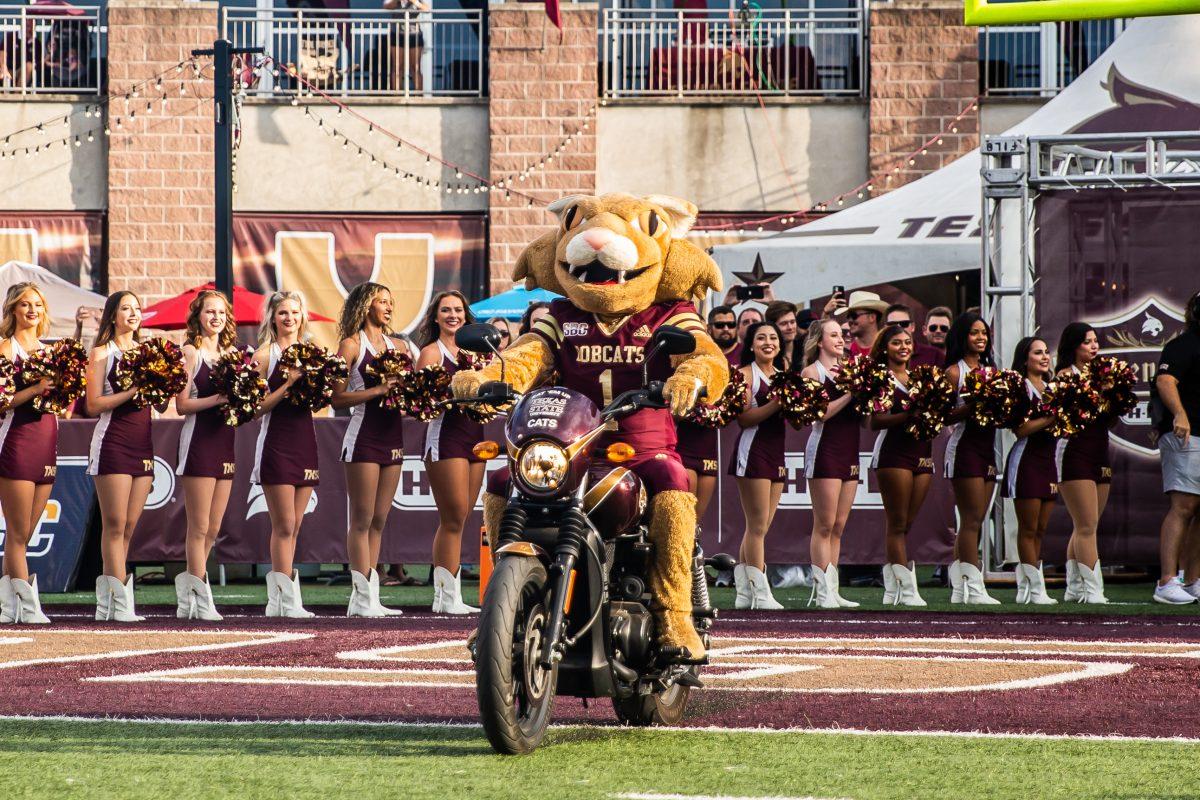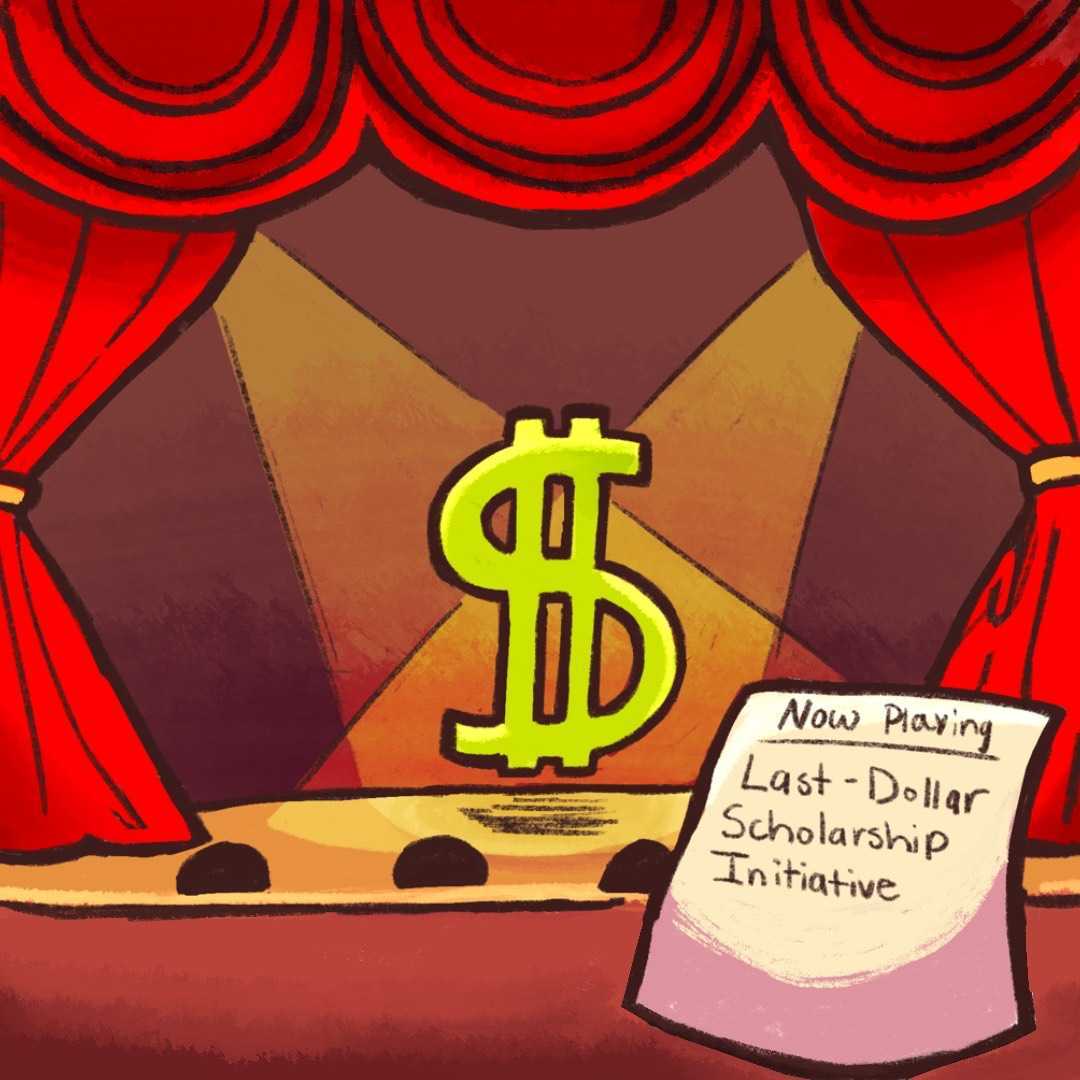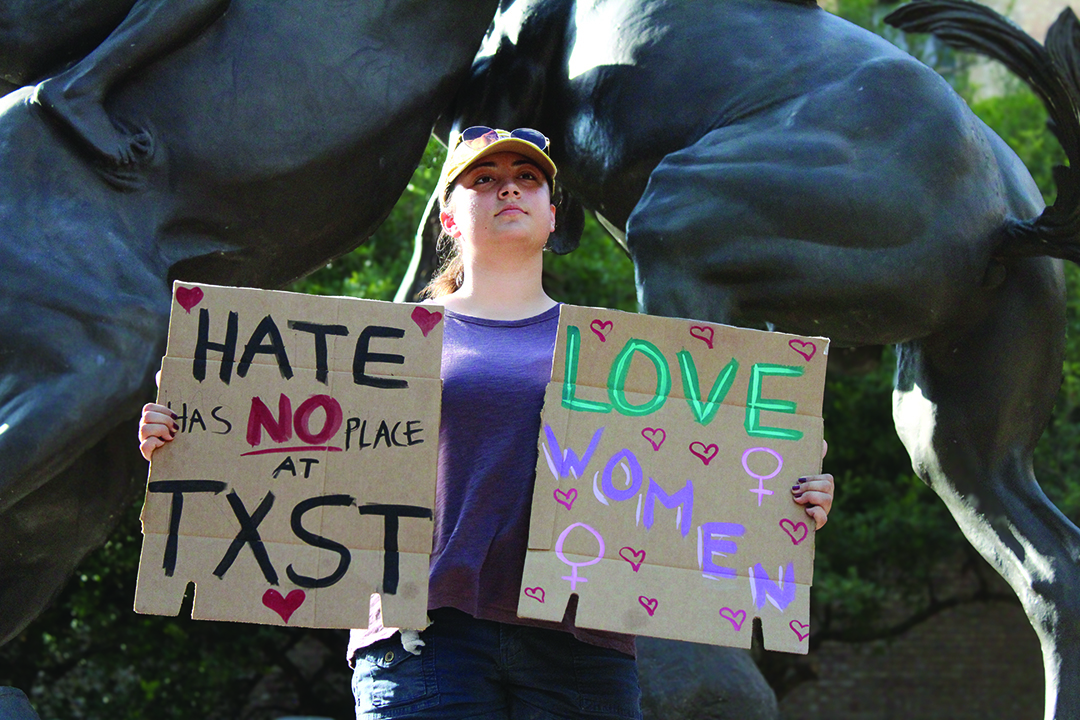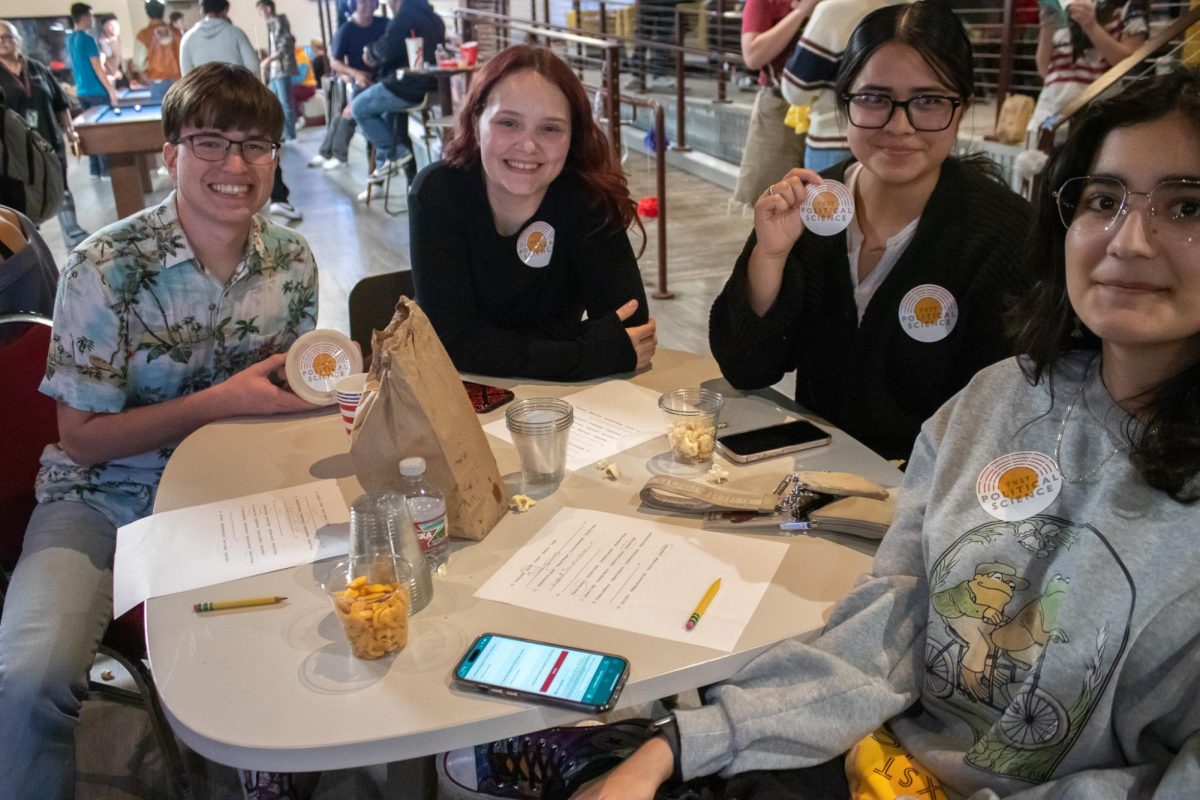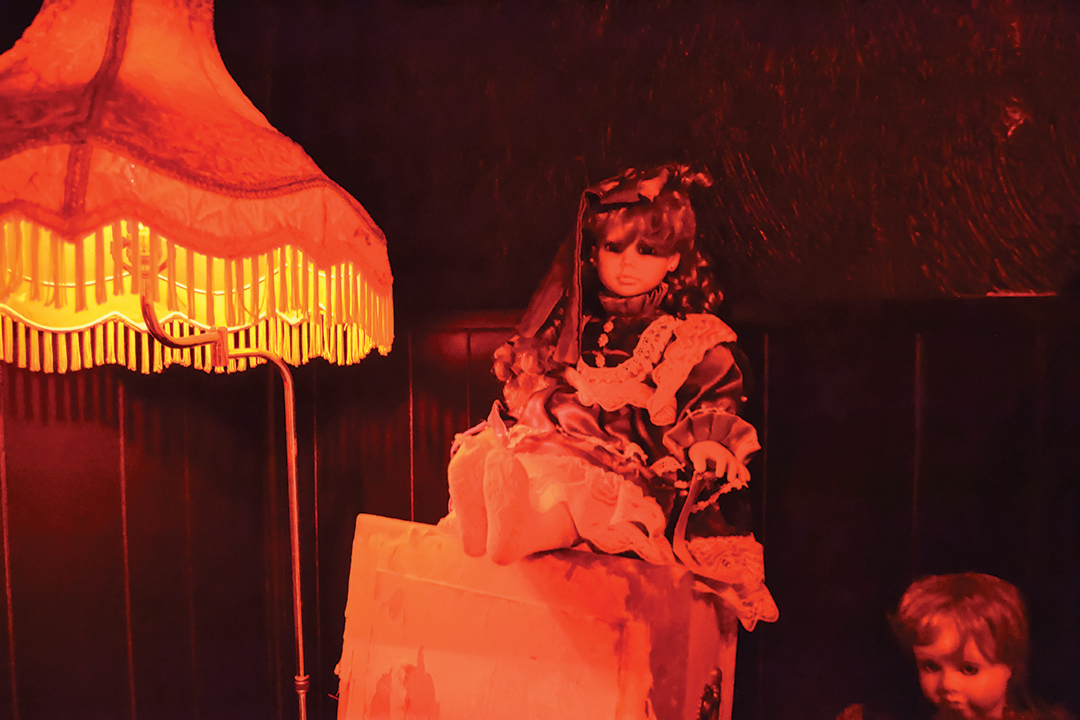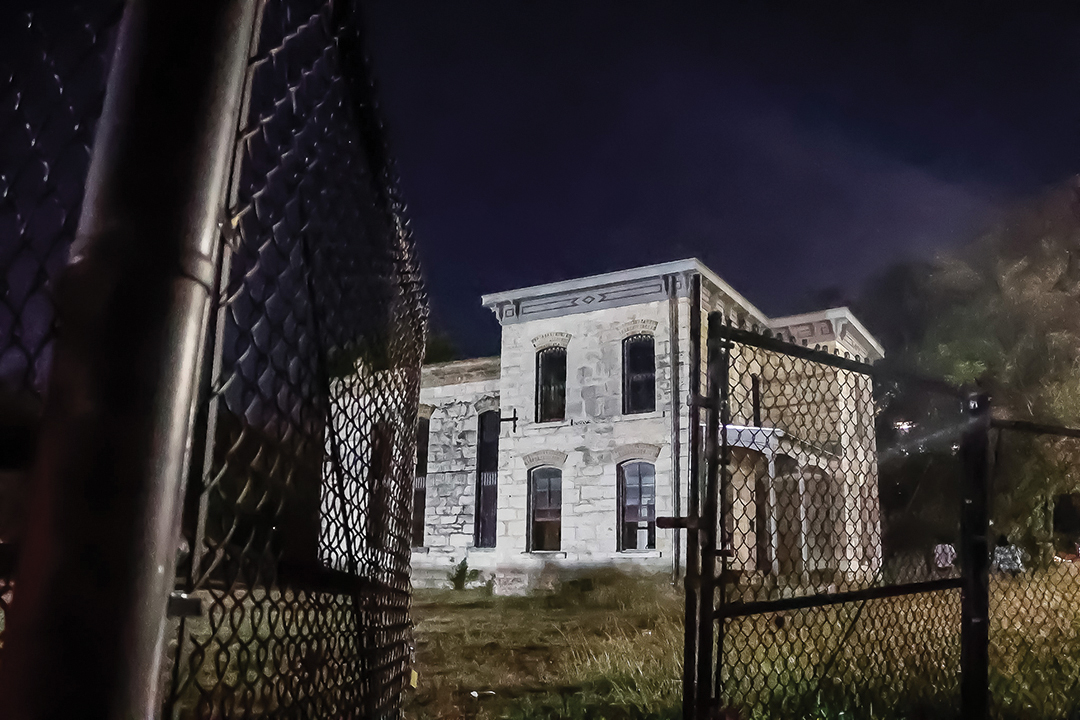Adopted in 1919, Texas State’s beloved mascot, Boko the Bobcat, has been a symbol of school pride, tradition and spirit for over 100 years.
“It doesn’t matter where Boko is, everyone automatically is like, ‘oh my gosh, the Boko is here,'” former Texas State mascot Blain Blanchard said. “It’s just uplifting. Everyone’s got smiles on their faces when he’s there. And it doesn’t matter who he interacts with. It’s always a good time.”
The search for Texas State’s perfect mascot began in 1919 when it was called Southwest Texas State Normal College. Oscar Strahan, the athletic director at the time, fueled the mission to appoint a school mascot and find an athletic nickname to raise school spirit.
The idea of using a bobcat came from biology department head, C. Spurgeon Smith, because of its prominence in the local area. The Texas State bobcat was not named until 1964 when Beth Greenless from Luling, Texas, won the “Name the Bobcat” contest against 100 students for her submission, “Boko.” She received a $5 prize and bragging rights for winning.
Today, a small team of four students carry on the legacy of Boko.
The quad consists of a finance student, a nursing student and two theatre education students. Together, they do more than just share the Boko title. The group comes up with new ideas for the mascot every week, brainstorming new mannerisms, signs and dances for games along with skits and videos for Boko’s social media accounts.
Although there is no written document that states that the students must keep their identities as Boko a secret, it is mascot code to do so.
“I’m very honored and I’m proud to be Boko, [all the Bokos] don’t want to be any other mascot,” one of this year’s Bokos said. “I love it because Boko is the logo incarnate, he’s the symbol [of Texas State], so it’s nice to have the honor to be that and to showcase my love for the school and school spirit with that costume.”
The four students manage Boko’s schedule, budget and social media accounts as well as ensure that he is where he needs to be at all times with only one car and costume.
As the university has changed through the years, so has Boko’s look. The current mascot costume, which was designed by alumnus Bran Monk, has been Boko’s look since 2003. Boko’s costume has gone through several changes, a recent one being his change in eye color from green to brown. “Boko the First” was the mascot’s official debut at a football game against the Texas A&I, now Texas A&M-Kingsville, Javelinas in Nov. 1964. Instead of a costume, a live bobcat was used.
Being in the costume is no cakewalk. One of the Bokos described the experience as hot, sweaty and exhausting. Through the mascot head’s eyes, Boko walks with no peripheral vision, looking at the ground and people’s feet to ensure his head faces forward.
Blanchard, who was Boko from 2018 to 2019, said being in the suit became second nature to him. Boko’s walk and actions came over him like a switch once the head was on. At events, he drew in energy from the people around him, which made him forget that he was even in a suit.
“When you’re in the suit you don’t really realize how hot and sweaty you are,” Blanchard said. “What [kept] me going [was] the energy of the crowd, and the energy of the fans the strong bond that the alumni have with the school.”
As a mascot, the students’ number one rule is that they are not allowed to talk, meaning while inside the suit, Boko has to make his every move more aggressive and exaggerated so that actions are expressed correctly. Football games can become incredibly exhausting for Boko, especially at away games where there aren’t suit trade-offs with one another like at home games.
Boko’s walk, mannerisms, personalities and character have been passed down through decades of around 300 student mascots and each one looks for new ways to incorporate more into their act by adding new dances and mannerisms.
Although there are only four Bokos, the cheer coach, cheer team and Boko’s manager are there to help them at all times. Whether Boko needs water or a break throughout games, they work as a team. Casey Dworaczyk, Boko’s manager, helps brainstorm ideas to promote and produce videos for the mascot’s social media accounts.
Dworaczyk and one of the Bokos are best friends who started making videos with one another to bring students out to football games. They tell students when, where and why they should attend. Boko is an official member of the cheer team.
Cheer practices on Tuesdays and Thursdays along with mascot meetings on Wednesdays are times for Dworaczyk and the four mascots to brainstorm ideas for videos and football games.
“We’re always trying to top ourselves,” Dworaczyk said. “It started off so small, like we didn’t have anyone to record so I just like the prop my phone up on the back of my truck was like probably I think we held it with like a water bottle or something. Now it’s mostly our friends … we have like a small group of people that are really willing to like, just drop everything and come help us record.”
Boko allows for engagement in an approachable way by being on the field with players, in the stands with fans and at other community events around Texas State and San Marcos. Cheer coach Ryan Riley believes Boko is the bridge that connects spirit organizations and is an important entity to students
“I think he is a great source of energy, not just for the cheer program, but for fans and students all over the place,” Riley said.
Editor’s note: the Boko sources are anonymous per university tradition.
Categories:
The Legacy of Boko: Students carry on over 100 years of tradition
Marisa Nuñez, Sophie Somoza, Sports Contributors
October 19, 2022
0
Donate to The University Star
Your donation will support the student journalists of Texas State University. Your contribution will allow us to purchase equipment and cover our annual website hosting costs.
More to Discover


